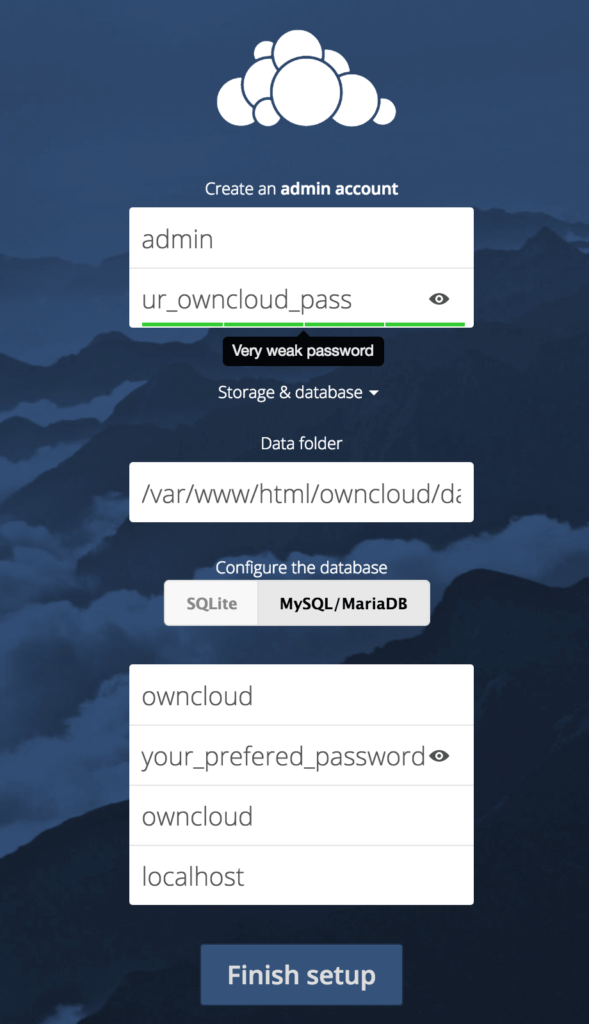

- OWNCLOUD INSTALLATION TUTORIAL INSTALL
- OWNCLOUD INSTALLATION TUTORIAL SOFTWARE
- OWNCLOUD INSTALLATION TUTORIAL PASSWORD
Step 2: Install further PHP extensions and applications and answer "Y" for yes when prompted. Begin this by running the following command and answer "Y" for yes when prompted. Step 1: OWNcloud requires PHP, which will needs setup before installing OWNcloud. CREATE DATABASE owncloud_db ĬREATE USER IDENTIFIED BY ALL ON owncloud_db.* TO PRIVILEGES
OWNCLOUD INSTALLATION TUTORIAL PASSWORD
Note: Running the MySQL commands, "owncloud_db" will be the OWNcloud database, "owncloud_user" will be the OWNcloud database username, and "password" will be the password for the database when needed during your OWNcloud set-up within the OWNcloud GUI. You must replace these inputs with your specific user and password to continue. We are using "owncloud_user" and "Securepassword" as an example for the OWNcloud database username and password. Step 7: Next, create a database for the OWNcloud installation, which will require a user with privileges. Step 6: Now that it has fully installed, log in to your installed MySQL. Do you wish to continue with the password provided?.Once you have done so, proceed with replying YES to: Note that Hostwinds always recommends keeping your data as secure as possible with a high-strength password. Next, enter a password according to the strength you require. When prompted for your MySQL password, choose a password strength of between 0 and 2. Step 5: Secure your MySQL now that it is active. Step 4: You will need to verify MySQL is active.

Step 3: Set mySQL to boot upon server start-up. Step 2: Enable MySQL by entering the following command. Step 1: Prepare your database for Drupal by installing MySQL.

An HTTP Server Test Page will appear if everything is correct. When this is complete, check that it is working correctly by navigating to your server's IP in the URL. Step 5: Apache will then install and verify. Step 4: Once you have done so, check the status of Apache (httpd). Step 3: Set Apache to start upon booting, systemctl start httpd Step 2: Enable Apache using this command. Enter "Y" for yes when prompted to do so. Step 1: Before beginning further installation, ensure the OS is up-to-date by running the following command. The below steps will help prepare your server and begin the installation of OWNcloud.īefore installing OWNcloud can be done, you will need to first prepare the following on your server by logging into your server via SSH. A Linux server with Centos 8 operating system installed on it will be able to host OWNcloud too.Īdditional requirements would include installing a LAMP (meaning Linux, Apache, MySQL, and PHP) stack for the fundamentals of running OWNcloud. Additional OWNcloud benefits include, but are not limited to:Īll that is needed to begin installing OWNcloud is a server with root access, such as SSH. However, OWNcloud gives ultimate control to the user that installs and uses it. Users can safely upload and download files with ease.
OWNCLOUD INSTALLATION TUTORIAL SOFTWARE
OWNcloud is software that shares files much like Google Drive and iDrive.


 0 kommentar(er)
0 kommentar(er)
